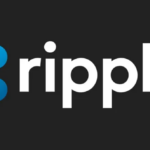Bitcoin-backed HELOCs: The merging of crypto and home loans

Cryptocurrency has been garnering positive sentiment under the Trump Administration, seeping into the realm of home lending, fueling a surge in new and existing products linked to digital tokens, like Bitcoin. The price of Bitcoin experienced fluctuations, dropping below $80,000 before recovering to around $84,756 last February. Post the president’s announcement regarding a crypto strategic reserve, Bitcoin spiked back up to over $94,000 briefly before sliding back to $86,166. Amidst these developments, Figure Markets ignited interest by launching a Bitcoin-backed home equity line of credit product, revolutionizing traditional lending practices.
Mike Cagney, the CEO of Figure, detailed the company’s journey from its first loan in 2018 to its recent achievement of a AAA-rated securitization. Figure ventured beyond home equity lines of credit, initially exploring the concept of Bitcoin mortgages, linking lending amounts directly to clients’ Bitcoin reserves. This concept initially waned due to Bitcoin’s price depreciation but has since resurfaced with increased mainstream acceptance of cryptocurrencies, aided by the president’s backing. Clients now seek ways to leverage their home equity to gain exposure to the digital currency market.
The unique Bitcoin-backed HELOC product by Figure functions similarly to conventional HELOCs, offering flexible draw periods ranging from three to five years, with the option to convert loan proceeds to Bitcoin or cash. Essentially, borrowers can utilize their Bitcoin reserves to secure additional funds beyond ordinary loan limits. Cagney highlighted the vast untapped potential within the American population, estimating that a significant portion could be enticed by this innovative offering to plunge into the cryptocurrency market.
Another player in the crypto-mortgage landscape, Milo, has showcased its ability to facilitate transactions using Bitcoin or Ethereum, availing a similar loan-to-value financing scheme to clients with crypto holdings. Milo’s CEO, Josip Rupena, shared insights into clients’ reluctance to sell their crypto assets to fund real estate purchases, due to the potential for appreciation and tax implications. By leveraging their crypto holdings as collateral and property, clients can access 100% of their home equity.
Rupena acknowledged the impact of the federal government’s favorable stance on crypto, citing it as a significant boon for Milo’s expansion. Moreover, events like the “crypto winter” and the collapse of Luna and TerraUSD cryptocurrencies served as temporary setbacks that spurred Milo to enhance its product offerings, including a cash-out refinance option. With homebuyers increasingly seeking alternative financing methods beyond traditional mortgages, Milo’s offerings have found resonance in a clientele eager to preserve their crypto assets while securing property purchases.
Rupena emphasized the healthy competition brewing in the crypto-mortgage sphere, with various firms devising distinctive structures and products, broadening consumer choices. The success experienced by Milo’s clients in purchasing homes through crypto assets underscores the evolving landscape wherein traditional financial norms are being challenged, paving the way for novel and innovative solutions in home lending. As more players enter this burgeoning market, consumers can expect a diversification of offerings tailored to their ever-evolving financial needs, ushering in a new era of financial inclusion and flexibility in the real estate space.



